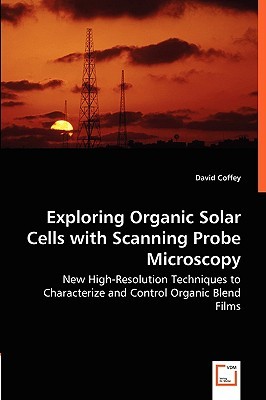
- We will send in 10–14 business days.
- Author: David Coffey
- Publisher: VDM Verlag Dr. Mueller E.K.
- Year: 2008
- Pages: 164
- ISBN-10: 3836463768
- ISBN-13: 9783836463768
- Format: 15.2 x 22.9 x 0.9 cm, minkšti viršeliai
- Language: English
- SAVE -10% with code: EXTRA
Exploring Organic Solar Cells with Scanning Probe Microscopy - New High-Resolution Techniques to Characterize and Control Organic Blend Films (e-book) (used book) | bookbook.eu
Reviews
Description
Future-generation solar cells are continually being introduced and refined. These new designs, however, are often based on new materials and there is a lack of fundamental understanding about how such devices work and how they can be improved. Conjugated polymers and small molecules are two such promising classes of materials suited for use in low-cost, thin-film solar cells. The performance of these materials, however, is highly dependent on film structure, and directly correlating local film structures with device performance remains challenging. This work describes several new techniques developed to probe and control the local optoelectronic properties of organic semiconducting films. These techniques include electrostatic force microscopy (trEFM), photoconductive atomic force microscopy (pcAFM), and a fabrication technique based on Dip-Pen Nanolithography (DPN). Taken together, these methods provide a first nanoscale look a charge and current generation in organic photovoltaic films. This work introduces these new techniques for the reader and details how they are being used to solve current scientific questions.
EXTRA 10 % discount with code: EXTRA
The promotion ends in 21d.19:45:32
The discount code is valid when purchasing from 10 €. Discounts do not stack.
- Author: David Coffey
- Publisher: VDM Verlag Dr. Mueller E.K.
- Year: 2008
- Pages: 164
- ISBN-10: 3836463768
- ISBN-13: 9783836463768
- Format: 15.2 x 22.9 x 0.9 cm, minkšti viršeliai
- Language: English English
Future-generation solar cells are continually being introduced and refined. These new designs, however, are often based on new materials and there is a lack of fundamental understanding about how such devices work and how they can be improved. Conjugated polymers and small molecules are two such promising classes of materials suited for use in low-cost, thin-film solar cells. The performance of these materials, however, is highly dependent on film structure, and directly correlating local film structures with device performance remains challenging. This work describes several new techniques developed to probe and control the local optoelectronic properties of organic semiconducting films. These techniques include electrostatic force microscopy (trEFM), photoconductive atomic force microscopy (pcAFM), and a fabrication technique based on Dip-Pen Nanolithography (DPN). Taken together, these methods provide a first nanoscale look a charge and current generation in organic photovoltaic films. This work introduces these new techniques for the reader and details how they are being used to solve current scientific questions.


Reviews